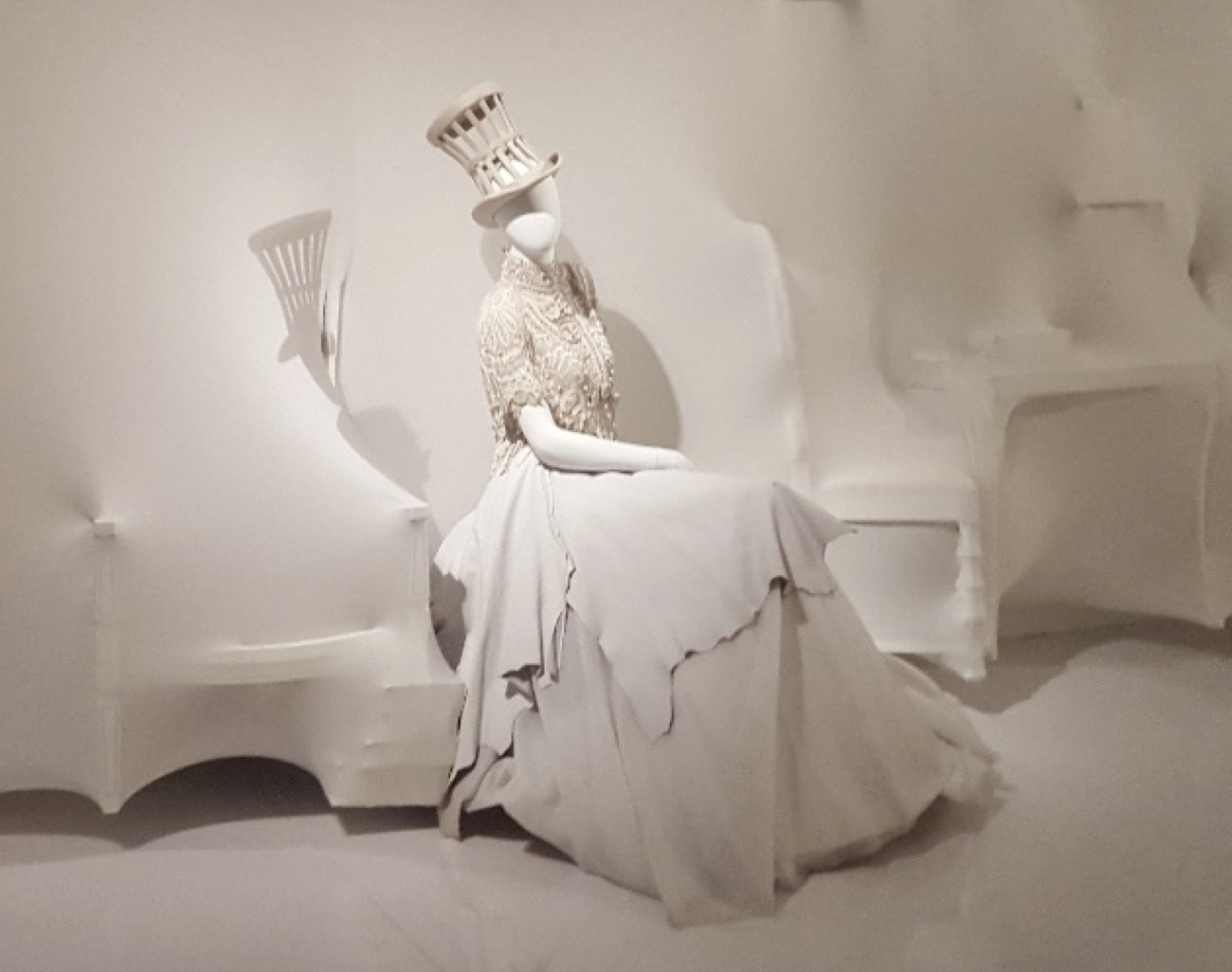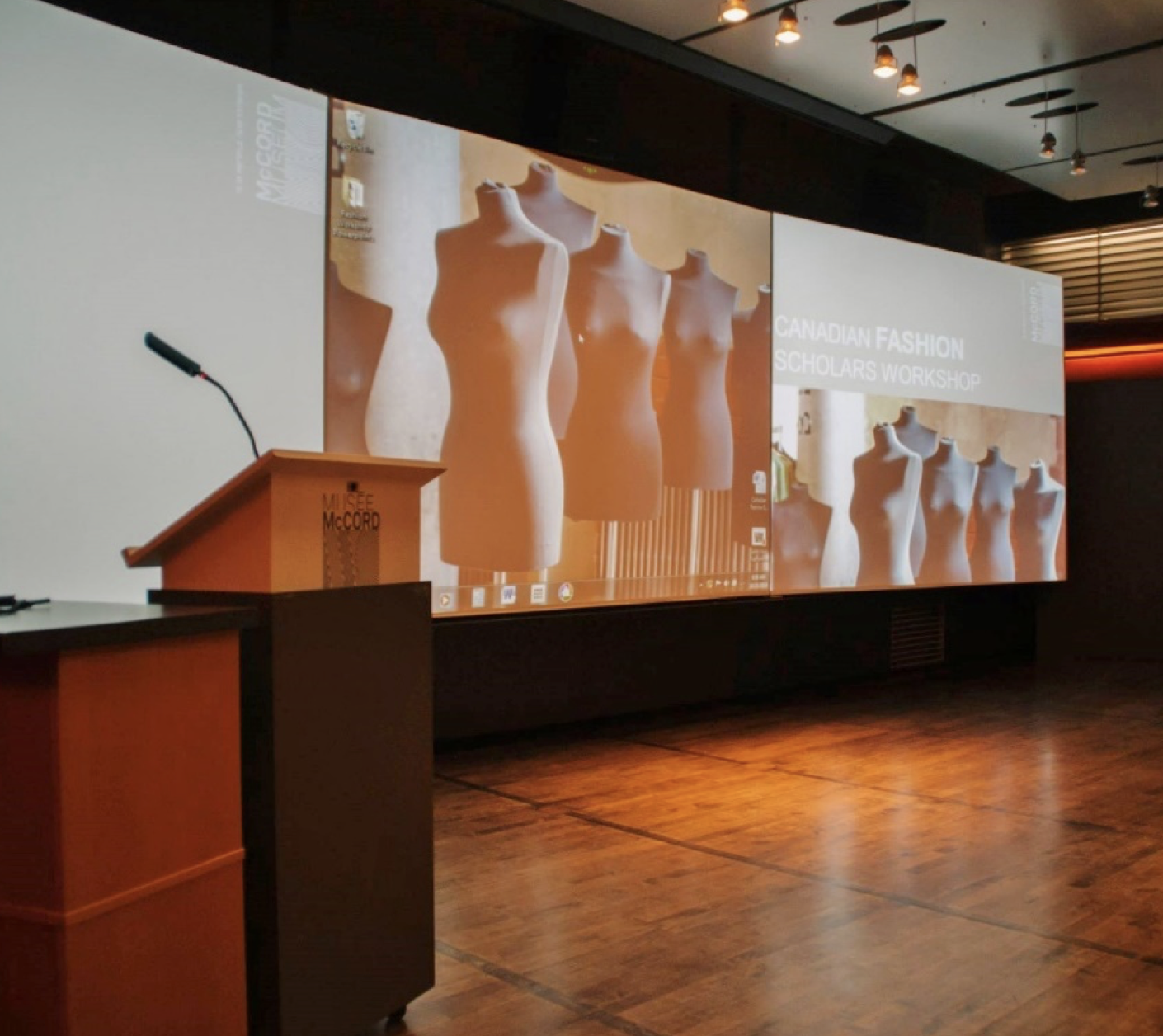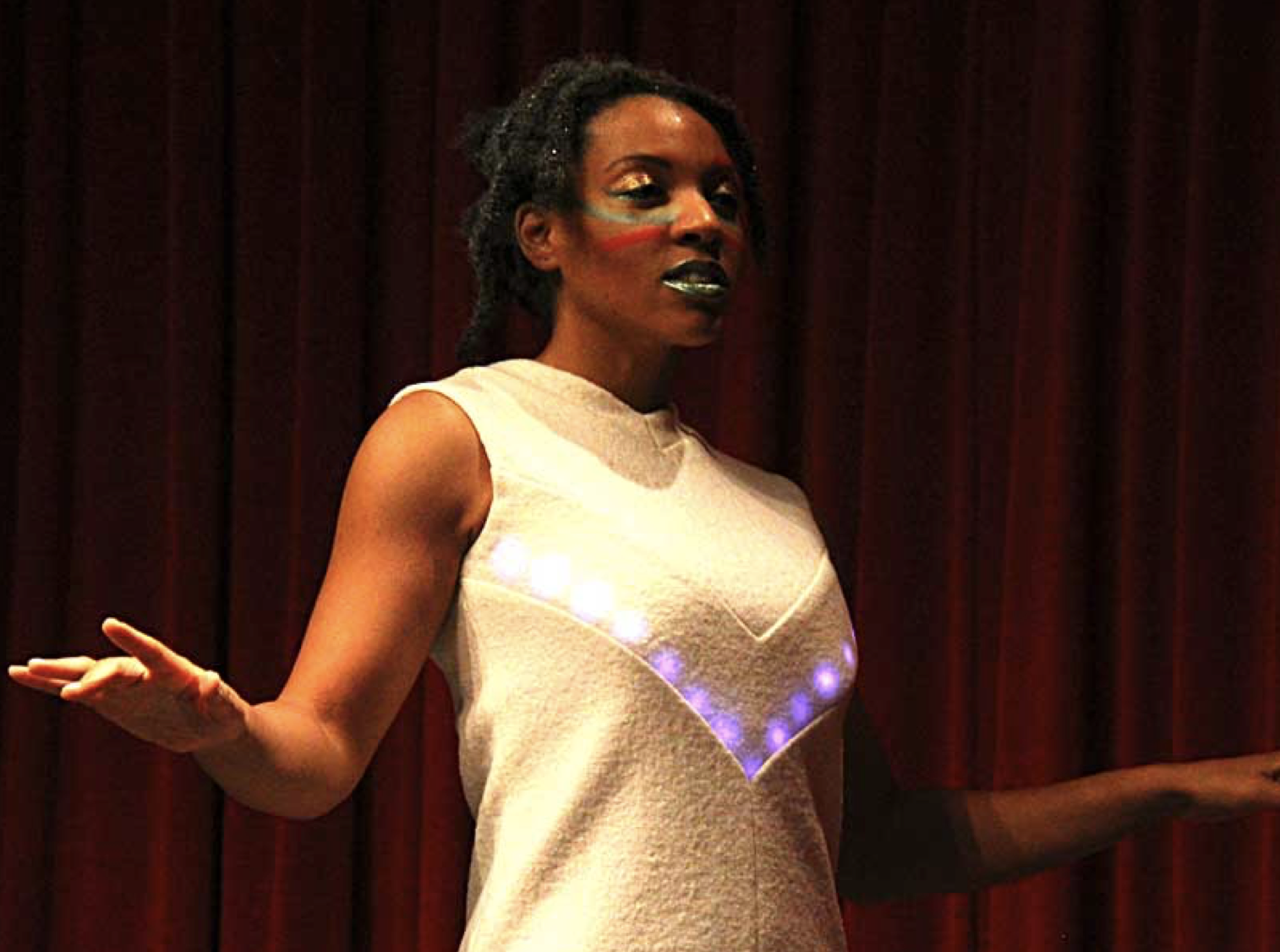Creating the Canadian Fashion Scholars Network
A network, in today’s digital world, is about instant access, connectivity, communication, quick exchange of ideas and resources, as well as about possibilities of creation and collaboration. The technological innovations of the past decade have made it easier to stay connected through social networking platforms, as well as to create online communication and research hubs that foster creative, professional, and academic collaborations. Speaking from experience, I can attest that technological innovations also make it possible to create different networks relatively quickly, with little to no cost, and without relying on the expertise of programmers or IT support. Building a network can start quickly, single-handedly, and spread widely and even globally with the help of other established networks and social media platforms.
A community, by contrast, is more about bringing together people with common goals and needs, and addressing these collectively and pragmatically. Building a community takes the proverbial village, and requires a lot of organizational time, efforts, and in lieu of available cultural funding, a lot of creative planning, thinking, fundraising, and volunteering. But first and foremost, community building requires people to come together on a regular basis to establish connections and conversations in person. Neurologically, we are wired to connect and empathize with people – which is essential in community building and in finding creative solutions to collective goals – but this can only happen in the off-line world, through inter-personal communication (which goes beyond the verbal or written), mutual understanding, common values and needs, collective brainstorming, and solution-based conversations. It is commonly accepted that communities are only as strong as the collective efforts of their individual participants. They require organizational leadership, as well as communal contribution and dedication. Professional and academic communities – or associations and organizations – usually come together on an annual basis to exchange ideas that further knowledge, strengthen the field, and foster and sustain a sense of community among the participants. No such community existed in the field of fashion in Canada until 2014, or rather, the individual members and clusters of this community were always there, but fragmented all across the country, not always communicating with each other, often not even aware of each other’s work, and certainly not gathering in person on a regular basis to exchange ideas or to collaborate with scholars and professionals from elsewhere in the country.
“It is commonly accepted that communities are only as strong as the collective efforts of their individual participants.”
My first experience, understanding, and appreciation of working collaboratively and trying to establish a sense of community through work and research came when Susan Ingram and I decided to publish a book on Berlin fashion together, which originated from fashion research I conducted for Susan, while completing my M.A. on exchange in Berlin. Out of this productive collaboration grew a series of conference papers, articles, then a book, and eventually a whole book series that began with our first volume Berliner Chic: A Locational History of Berlin Fashion (2011). It engaged with the cultural landscape of Berlin through the lens of fashion and its intersections with history, museums, photography, film, music, and gender. The second book, Wiener Chic: A Locational History of Vienna Fashion (2013) was co-authored by Susan Ingram and Markus Reisenleitner, and they hired me to do research for them one summer in Vienna. I interviewed designers, organizers, curators, archivists, watched and summarized archival fashion films, did a literature review and traced down publications on Viennese fashion and art history, and got to see fashion collections of all the major museums. The third book in the Urban Chic book series was Montréal Chic: A Locational History of Montreal Fashion (2016) that I co-authored with Sara Danièle Bélanger Michaud, a francophone Comparative Literature scholar, who contributed the “Symbols” and “Music” chapters and helped me map out the French literature on Québec and Montreal fashion for the Literature Review in our Introduction. I focused on the history of Montreal fashion, the fashion collections and exhibitions housed in museums there, the complex fashion economy and funding structures, the vibrant fashion scene with incredibly talented designers, the intersections of fashion and film, as well as the emerging field and community of innovative fashion technology based in Montreal. Through this work, I not only gained a better understanding and appreciation of the Canadian fashion landscape, but also recognized the need to connect and generate visibility for the tremendous work of others. During my research for this book, I met with many fashion scholars, curators, archivists, designers, and other fashion professionals in Montreal, Toronto, Ottawa, Vancouver and other cities in Canada. What became immediately apparent to me at that time was the lack of connectivity between all these cities, research and design clusters, and the great need and desire for such a community.
In 2014, while completing my PhD at McGill University in Montreal, I founded the Canadian Fashion Scholars Network in the hope of bringing together scholars, curators, and fashion professionals from across the country in order to build a scholarly community and encourage nation-wide collaboration and exchange. I soon discovered that while small and localized communities of fashion scholars and professionals had formed all across Canada, especially around universities, fashion schools, and fashion collections housed in museums, there was no nation-wide network or collective interaction. In October 2014, I organized the first Canadian Fashion Symposium at the McCord Museum in Montreal, featuring the work of 22 scholars and curators from across Canada. The Symposium was open to the public and very well attended, bringing together francophone and anglophone scholars, curators, fashion journalists, as well as many members of Montreal’s vibrant fashion scene. The overwhelmingly positive response to this Symposium from all participants and attendees confirmed the collective need for this Network, inspired further events and community building efforts, and established the beginning of a new community.
The following year, in November 2015, we reconvened at the Museum of Vancouver for our second annual Fashion Symposium, where I also had the opportunity to curate and organize my first fashion show, entitled, Fashion Avant-Garde: Now and Then. This time, I collaborated with the museum, Vancouver’s avant-garde, eco-conscious, and Indigenous fashion designers, as well as the renowned fashion collectors Ivan Sayers and Claus Jahnke. The historical and vintage couture pieces from Ivan’s collection were complemented thematically, visually, technically, or conceptually by the new contemporary and innovative designs made in Vancouver. The overall theme of the fashion show was the cutting edge of fashion design today and throughout history, juxtaposing old and new, as well as high tech and low-tech fashion trends and concepts. The show culminated with the innovative design by Suzi Webster (a Vancouver-based artist and designer, whose work needs to be known across Canada), entitled Electric Heart that visualizes and displays the transmitted heartbeat of the wearer (or their partner) through Bluetooth transmission onto a LED screen on the tailored dress. The show was a great success and furthered our goal to foster and sustain a community of scholars, designers, and organizers. That year, I also designed and launched our new website and social media platforms, which I created to highlight the work of Canadian fashion scholars, their publications, exhibitions, programs, projects, and to assist in communication and collaboration.
The third Fashion Symposium took place at the Bata Shoe Museum in Toronto in October 2016, with twenty-seven Canadian participants presenting their work on fashion. It was the largest gathering to date, and included new and returning scholars, fashion curators and archivists, textile and fashion professionals, designers, and as always, graduate students. Alternating the locations of the annual symposia between eastern and western Canada allows new participants to discover the Network and to present their work, as well as to showcase fashion collections and exhibitions of Canadian museums and fashion institutions. So far, we have been extremely fortunate to be hosted by various Canadian museums that have fashion collections, fashion exhibitions, and a mandate to attract new and younger audiences, not only interested in art, but fashion as well. That year, I collaborated with Toronto-based fashion scholars Ingrid Mida and Alexandra Kim on compiling a Bibliography of Canadian fashion to help fashion scholars in Canada do their research, and to map out the growing scholarship in this field.
“Building a community takes the proverbial village, and requires a lot of organizational time, efforts, and in lieu of available cultural funding, a lot of creative planning, thinking, fundraising, and volunteering.”
In September 2017, we returned to Montreal for the fourth annual Fashion Symposium, this time hosted by the Montreal Museum of Fine Arts, with 22 presenters from all over Canada. The Symposium weekend started with a special tour of the fashion and technology labs of Barbara Layne and Joanna Berzowska (now called the Textiles and Materiality Research Cluster Commons Area) and part of the Milieux Institute for Art, Culture and Technology at Concordia University. I profiled the work of both women in my chapter on technology in Montréal Chic, and it was fascinating to see how far their research and designs have come in only a few years. During the Symposium, I demonstrated the new additions to our website, including a Student Projects page, where I showcased the work of my undergraduate students at the University of Victoria, who took my cultural history course on “Urban Chic - Cultural History of Fashion and Cities” in the spring of 2017 and built well-researched websites on fashion cultures and fashion history. As a special treat for all Symposium participants, Thierry-Maxime Loriot, the curator of the highly successful Jean Paul Gaultier exhibition produced by the Montreal Museum of Fine Arts, took us on a tour of his “Love is Love” fashion display that commemorated the closing of the exhibition tour. With this highly acclaimed and globally well-attended exhibition, the Museum has positioned itself among the world’s leading fashion museums, and put Montreal, and by extension Canada, on the map of contemporary fashion exhibition practices and innovation (I also have a chapter on that in Montréal Chic).
Next year, in September 2018, we will travel to Edmonton, where we will be hosted by the Department of Human Ecology at the University of Alberta in collaboration with the newly reopening Royal Alberta Museum. Both institutions own impressive fashion collections of clothing from across Canada, which the Network members will get to see during the Symposium weekend. Alternating between different cities in eastern and western Canada allows us to expand the Network and bring together professionals and scholars, who may not otherwise have access to the Network or other venues of collaboration and exchange. Over the last few years since its conception, the Network has grown substantially in participation, collaboration, exchange of ideas, and creative projects. Bringing people together once a year has a tremendous effect on our productivity and creativity. A core group of regular participants is forming. After listening to presentations all day, we all go out for dinner together, exhausted but inspired, and start brainstorming on projects together. It is exhilarating and impressive.
I am not yet tenured; after completing and defending my dissertation at McGill University, I have been teaching as a sessional instructor in multiple departments at the University of Victoria. Along with developing new courses each term, maintaining a more-than-full-time teaching load, publishing and researching new work, and organizing other conferences and events, I still do everything for the Canadian Fashion Scholars Network by myself – including all the planning, organizing, emailing, website design and maintenance, social media upkeep and networking, program, logistics, event planning, promoting, outreach to new fashion communities, institutions, journalists, designers, and fashion students. It takes hours, days, and weeks of unpaid work and exceptional organizational skills, but every time we get together in different cities, we inspire each other to create. And to keep going. The highly positive response from all participants of the Network is exalting and gratifying. We show up for each other. We support and champion each other’s work. We collaborate. We create opportunities for each other and for others.
The next step is to showcase and present the work of this Network of Canadian fashion scholars at other national and international conferences, to promote and circulate existing publications, to generate new publication venues for new research, and to create and organize exhibitions to showcase and bring together designers, artists, collectors, curators, organizers, and researchers (as we did in Vancouver). Along with organizing the annual gatherings, my focus is currently on creating more publication opportunities both for established and young Canadian fashion scholars and artists. After many years of promoting the Urban Chic book series, edited by Susan Ingram and published by Intellect Press in Bristol, I have an upcoming edited volume on “Fashion Cultures and Media” in Imagination: Journal of Cross-Cultural Image Studies (co-edited with Elena Siemens and forthcoming in 2018), and am currently developing an edited volume on Canadian Fashion Culture and Diversity.
“We show up for each other. We support and champion each other’s work. We collaborate. We create opportunities for each other and for others.”
As I outlined in Montréal Chic (2016), fashion culture is less defined within Fashion Studies, but I find it to be a useful lens through which to define my own work on fashion. Even though I was trained as a cultural historian and cultural analyst, my work on fashion deals very little with material history, or with clothes per se, but rather examines fashion representations, networks, mediations, imaginations, and scenes in their urban contexts. Through my work on several books in the Urban Chic book series, I understand fashion culture as the foundational amalgamation of a city’s fashion identity, history, industry, manufacturing practices, labor conditions, gender and identity negotiations, scene formations, and media representations. Analyzing locational fashion cultures requires interdisciplinary and comparative approaches and methodologies. It presupposes an understanding of fashion and of culture as complex frameworks of cultural analysis that can be multifaceted and contradictory, and often challenge our disciplinary training as historians, theorists, literary and media scholars, and feminists.
Montréal Chic: A Locational History of Montreal Fashion (2016) was the first book to explore the historical and contemporary fashion culture, scene, industry, and technology in Montreal, and told the stories of cultural, urban, social, and historical transformations in Montreal through the lens of fashion. In researching this book, I relied on the expertise of other fashion scholars and professionals, and I wanted to build a Network that would make it easier for other scholars to connect and exchange research, expertise, and to collaborate more easily with each other. Since its publication, I continue to conceptualize and develop projects and programs that aim to expand our collective efforts to celebrate, promote, and strengthen interdisciplinary collaborations in Canada and Canadian fashion. My work on fashion can be found on my blog, Suites Culturelles, and in print. If you are working on fashion in Canada, please join our Network and come to the next Symposium in Edmonton on September 29, 2018! You can find more information on our website and Facebook Group. We look forward to meeting you!





